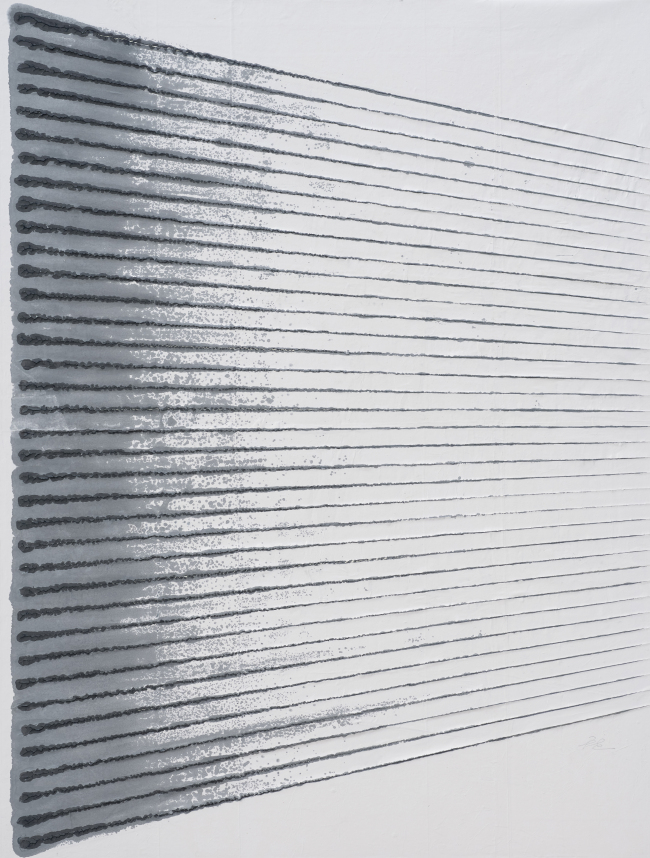Dansaekhwa, the Korean genre of monochrome painting, is enjoying rising popularity in the global art market. But only a few dansaekhwa artists are still alive to see their works finally get global recognition.
Many of the artists, who mostly produced work from the 1960s to 1980s, have passed away. Those who are still around are mostly in their 80s. Nevertheless, their masterpieces have made dansaekhwa perhaps the fastest growing art movement in the global art world.
An ongoing exhibition at Kukje Gallery sheds light on one of the late dansaekhwa artists, Kwon Young-woo (1926-2013), and his devotion to the use of paper and ink to create abstract images. It is the first large gallery exhibition since his death. During his lifetime, his works had been mainly presented at museums and biennales overseas.
Many of the artists, who mostly produced work from the 1960s to 1980s, have passed away. Those who are still around are mostly in their 80s. Nevertheless, their masterpieces have made dansaekhwa perhaps the fastest growing art movement in the global art world.
An ongoing exhibition at Kukje Gallery sheds light on one of the late dansaekhwa artists, Kwon Young-woo (1926-2013), and his devotion to the use of paper and ink to create abstract images. It is the first large gallery exhibition since his death. During his lifetime, his works had been mainly presented at museums and biennales overseas.

Dubbed the “paper artist,” Kwon explored the possibilities of abstract expression using traditional Korean mediums such as Korean rice paper, hanji, and Chinese ink, meok. He experimented with the paper, which he cut, ripped, tore and layered with more paper. These attempts added textural qualities to the flat paper surface and unexpected images when combined with paint.
“My work begins from creating the canvas with hanji. After gluing together one, two or multiple layers of paper, I rip, puncture and color them. I paint both on the surface and back of the canvas to have the paint bleed into the front,” Kwon said before.
His unique painting practice is reminiscent of that of other dansaekhwa artists such as Ha Chong-hyun, who also creates his own canvas with burlap from grain sacks and pushes paint from the back of the canvas.

“He used paper since the 1970s. He said before that he began to use rice paper because it was the most common material available to him,” explained Zoe Chun, communications director at Kukje Gallery.
Kwon, born in 1926 in the Japanese colonial era in Korea, studied Oriental painting at Seoul National University, where he was among the first art school class with other Korean art masters such as Suh Se-ok and Park No-soo.

The exhibition runs through Dec. 6 at Kukje Gallery in Samcheong-ro, Jongno-gu, Seoul. For more information, visit www.kukjegallery.com.
By Lee Woo-young (wylee@heraldcorp.com)


















![[Today’s K-pop] Treasure to publish magazine for debut anniversary](http://res.heraldm.com/phpwas/restmb_idxmake.php?idx=642&simg=/content/image/2024/07/26/20240726050551_0.jpg&u=)